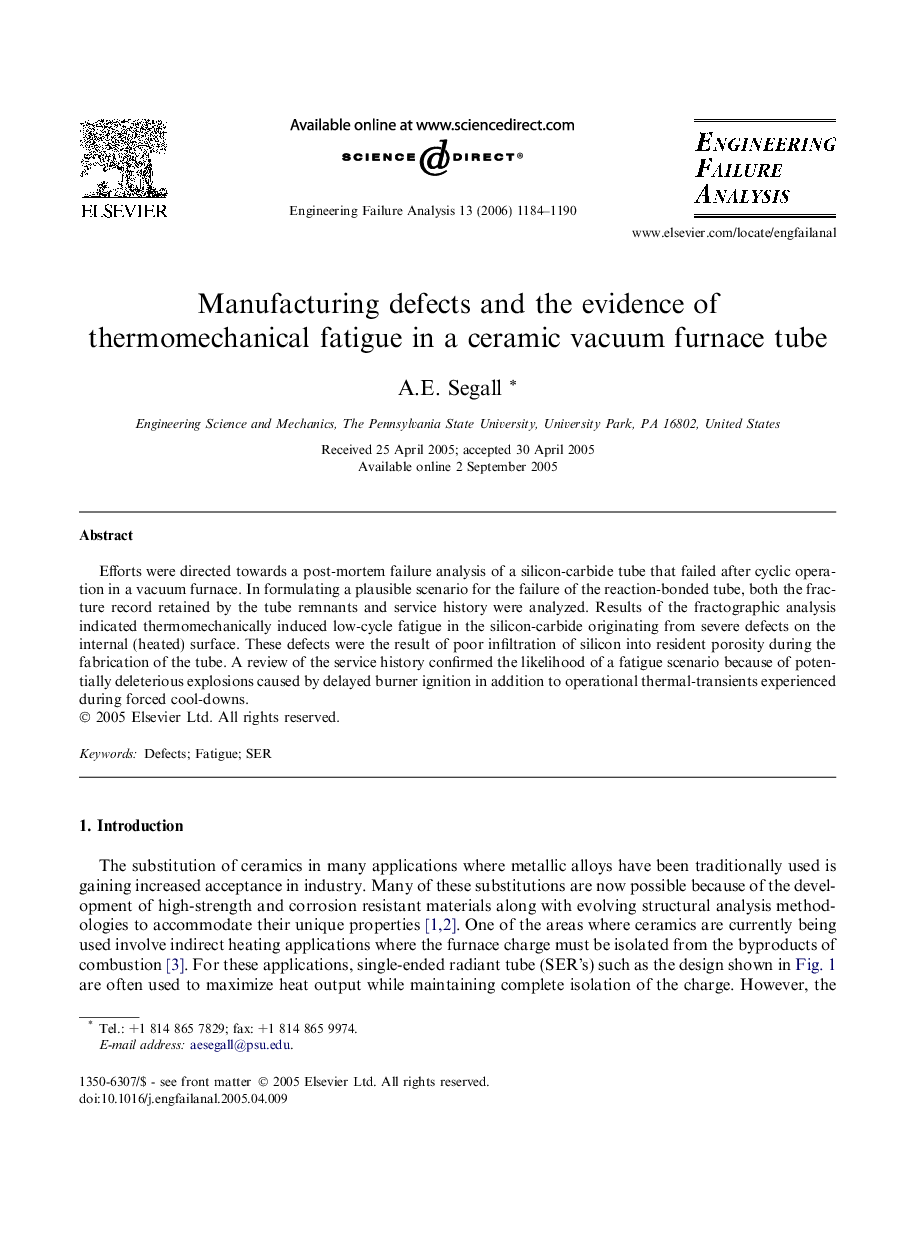| Article ID | Journal | Published Year | Pages | File Type |
|---|---|---|---|---|
| 769277 | Engineering Failure Analysis | 2006 | 7 Pages |
Efforts were directed towards a post-mortem failure analysis of a silicon-carbide tube that failed after cyclic operation in a vacuum furnace. In formulating a plausible scenario for the failure of the reaction-bonded tube, both the fracture record retained by the tube remnants and service history were analyzed. Results of the fractographic analysis indicated thermomechanically induced low-cycle fatigue in the silicon-carbide originating from severe defects on the internal (heated) surface. These defects were the result of poor infiltration of silicon into resident porosity during the fabrication of the tube. A review of the service history confirmed the likelihood of a fatigue scenario because of potentially deleterious explosions caused by delayed burner ignition in addition to operational thermal-transients experienced during forced cool-downs.
